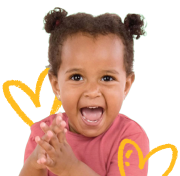One of the best ways to tackle all the questions and doubts associated with the process of teaching baby to sign is to provide you with real life baby sign language stories that may be similar to your own.
Many household face the challenge and gift of two or more language spoken at home. We hear anecdotes and read stories and reports that bilingualism may delay speech. This may generate some hesitation and concern as we seek to incorporate baby sign language as a means of expression for the pre-verbal child.
On a recent study, Drs. Barbara Lust and Sujin Yang of the Cornell University College of Human Ecology confirm that bilingual children do not experience speech delays, language confusion, or cognitive problems. In fact, the two researchers note that bilingualism has definite cognitive and social advantages.
Learning and speaking two or more languages appears to enhance the development of a student’s executive attention — the ability to focus amid distractions, while providing the multi-language child with easier access to other world cultures.
Last year we found great delight in sharing with you the baby sign language journey of Amelie. To add to our wonderful collection of baby sign language videos we want to introduce you to Xaviera.
signing in french from Baby Sign Language on Vimeo.
Xaviera’s mom tells us:
“We started teaching Xaviera sign language as soon as she was born. We also speak French in the house and wanted to teach her ASL so we just combined the two and she started signing around 4 months with potty and milk and more. She was fully potty trained by 11 months and we owe it to signing. She loves to sign and it was a great way to communicate with her when she was a baby. I believe she was a happier baby because of it. Instead of getting frustrated or crying, she would just sign to us what she wanted. She’s 3 now and speaks French, Spanish, German and Chinese. . . and still signing”

If you are lucky to have a multilingual household begin by using objects to introduce baby to multilingualism. Use toys, food items, animals or any other non-abstract set you feel is suitable to the interests of your little one. Before you know it your baby will impress you and delight you with a rich vocabulary in their primary and secondary language as well as baby sign language!




